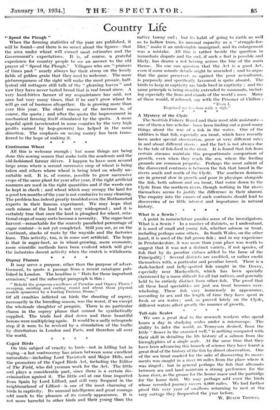Continuous Wheat All this is welcome enough ; but some
things are being done this sowing season that make both the academic and the old-fashioned farmer shiver. I happen to have seen several large areas where a second successive crop of wheat is being taken and others where wheat is being tried on wholly un- suitable soil. It is, of course, possible to grow successive crops of the same plant for year after year, if the right artificial manures are used in the right quantities and if the weeds can be kept in check ; and wheat which may occupy the land for a good ten months of the year is not conducive to easy cleaning. The problem has indeed greatly troubled even the Rothamsted experts in their famous experiment. We may hope that such misuse of the land is not very widespread ; and it is certainly true that once the land is ploughed for wheat, rota- tional crops of many sorts become a necessity. The sugar-beet harvest—remarkable for the scarcely paralleled percentage of sugar content—is not yet completed. Still you see, as on the Continent, stacks of roots by the wayside and the factories hum. This activity, too, is in some sort artificial. The hope is that in sugar-beet, as in wheat-growing, more economic, more scientific methods have been evolved which will give the industries decent activity when the crutch is withdrawn.








































 Previous page
Previous page